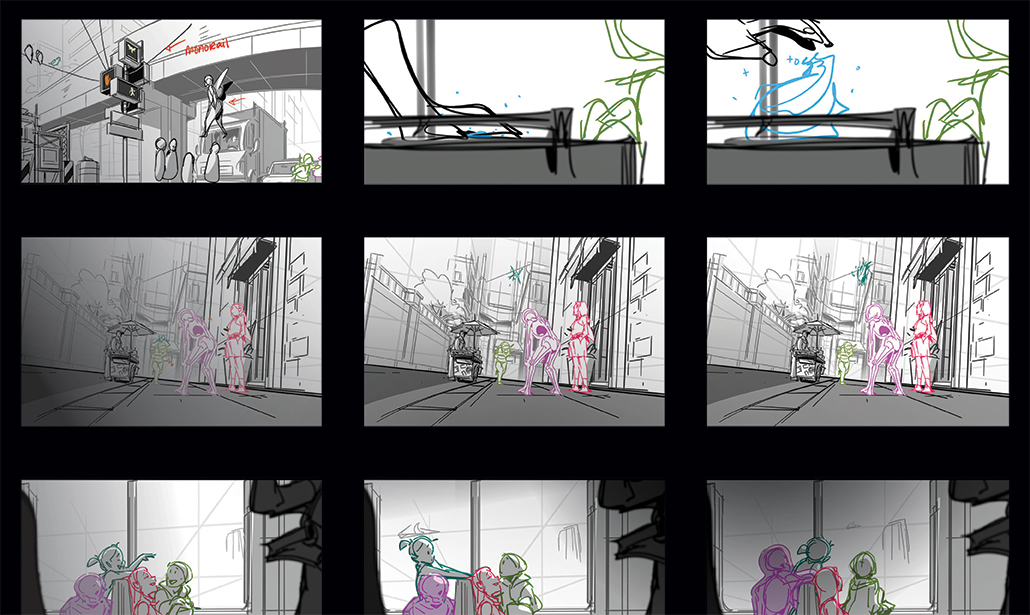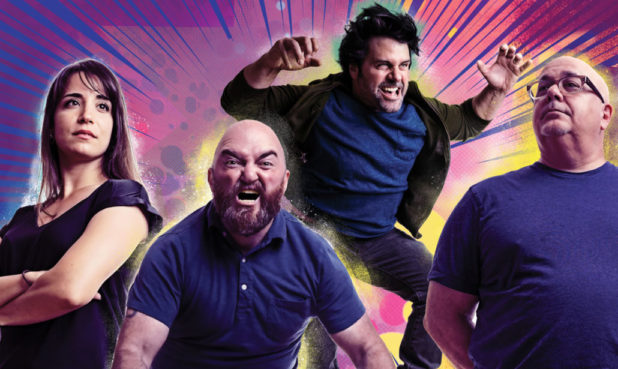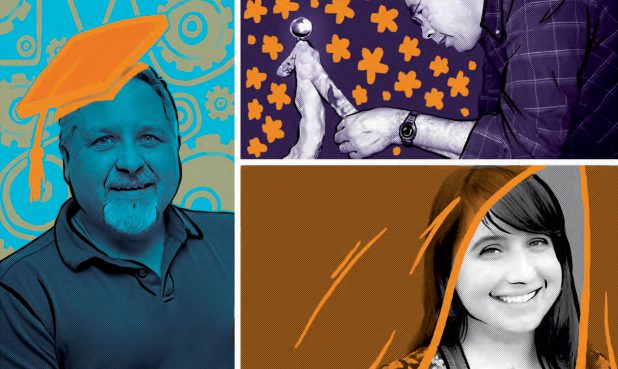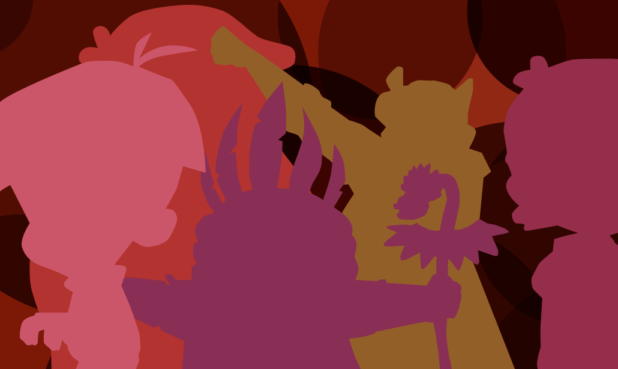In the world of superheroes, Marvel’s X-Men are among the most sympathetic—mutant humans with superhuman abilities, whose “different-ness” makes them suspect and puts their lives constantly at risk. It’s no wonder they return over and over in animation and live-action iterations. This time around, X-Men ’97 is a revival of the popular X-Men: The Animated Series that ran from 1992 to 1997.
Continuing the storyline, X-Men ‘97 showcases the franchise’s signature blend of action with complex interpersonal dramas. It’s a series that asks for emotional investment on the part of the viewer, and according to Storyboard Artist Ibraheem Jara: “When it comes to figuring out how to sell a moment visually, it starts with the storyboards.”
I have to frame [the character] in a way that shows that they’re in power, that they’re not in power, or that they’re feeling lonely or scared.—Ibraheem Jara
That start, though, happens well before the artist’s first thumbnail sketches. For Jara, after reading the script, he will meet with the director, and depending on the director, he says he might be given freedom to explore different approaches. Other times, the director might have a specific vision to be conveyed. “Both have their merits,” he says. “It’s cool to have freedom, but it’s also cool to have a lot of direction.”
Emi: Emmett Yonemura, a Storyboard Artist who also directed some X-Men ’97 episodes, uses their first pass at reading a script to determine where they’re confused and what’s not working for them as a first-time reader and as a fan. “Then I use my skills as a storyteller to pitch back to the writers,” they say. “Sometimes it’s successful, sometimes it’s not. But what I love is that it’s always a collaboration and a conversation. I love that we get the trust to be the next step in the storytelling process.”
Hopping on Board
Getting into the psychology of the story means reading between the lines of dialogue—Jara says he will read a script numerous times: “Maybe the 12th time you read a sequence, you’ll realize, oh, that’s what’s happening.” There might be “a vibe” that the audience won’t pick up on right away, and once he understands what that is, he’ll write down his thoughts. And if any references come to mind, he might look them up and study them on YouTube.
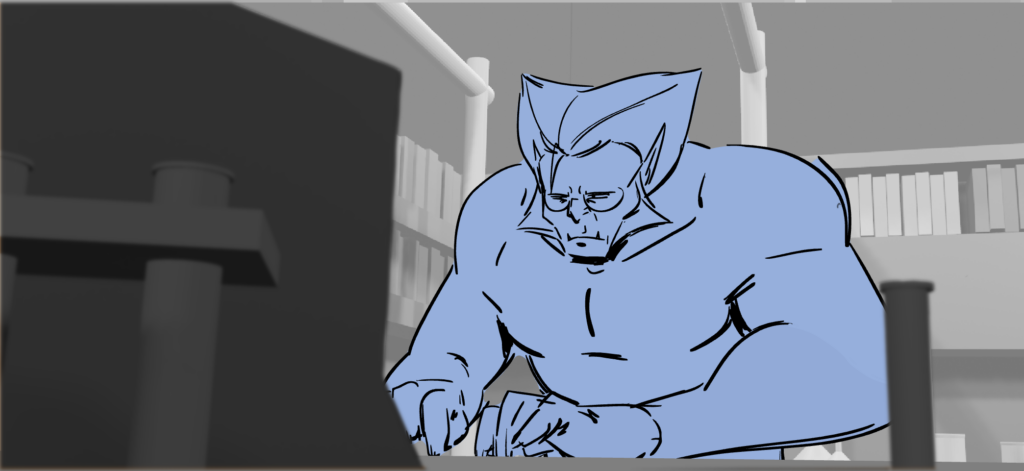
For example, in Episode 8, working on a sequence between one of his favorite X-Men characters—Beast—and a secretly evil reporter, Jara needed to “figure out how to build that tension and have it explode at the end where [the reporter] reveals who she is.” He turned to a segment he remembered from Bladerunner 2049 where one of the police chiefs is killed. “They’re very different scenes,” he says, “[but] it reminded me—there’s two characters in a room. One character’s about to try to attack [the other], but we don’t know it’s going to happen… The switch when you know something is going to go wrong is what I liked.”
Taking inspiration from the timing of the beats to build tension, Jara chose specific lines for the reporter to make deliberate actions. The scene begins with the reporter bringing Beast hot cocoa as an apology for something that happened previously. “She hands it to him, but once [Beast] starts explaining what he is doing, she carefully puts the cocoa down,” he says. These cuts, from Beast talking to a close-up on the reporter’s face to a close-up on her hand with the cup as she in turn asks a seemingly innocent question, is subtle, but it cues the viewer to the turning point moment. “I wanted this to give the audience the signal that she’s not really here to chat and drink hot chocolate,” Jara says.
Determining the underlying vibe of the script is also how Storyboard Artist Cassey Kuo gets to the heart of the story. “I realized early on that when I just went off the [dialogue], I would lose a lot of … connective tissue,” she says. “That led me to—oh, I should write out every beat.” These beats help her establish emotional arcs. “I feel like every scene has its own little rising action, climax, falling action,” she says. Within a scene, something will happen, no matter how small, to change the characters. “I want to make sure I’m tracking that,” she says. This also helps her mitigate choice paralysis: “I want to craft that path so I don’t accidentally board myself into a corner. I think the writing upfront helps me clearly state my intentions for the scene and the shot.”
Mood Boards
In television, where budgets are tight and efficiency is essential, simple techniques can go a long way for a Storyboard Artist. For example, a Dutch Angle—a classic cinematic technique in which the screen is tilted—can “make the audience feel that there’s something wrong without actually spelling anything out and saying something’s wrong,” says Yonemura. And setting the tone can be as simple as less is more. Watching ‘80s and ‘90s animation, they observed that to create a mood when someone is doing something like a long speech, there will just be a slow pan over a background.
Tricks and shortcuts are no substitute, of course, for artistry that ensures the emotional heft of a scene. Due to script changes, rewrites, and emotional beats that don’t quite land right, it’s not uncommon for a Storyboard Artist to revise another’s boards. In Episode 3, Yonemura inherited a storyboard sequence where Sinister confronts Jean Grey in her bedroom, and Jean learns that she is a clone. “What the board artist originally gave me was a beautiful path of just the acting and the shots that we needed,” they say, “and what I did was a lighting path … plussing them with this idea of—I want it to be a dark room, and I want there to be lightning outside the windows, and I want there to be mood lighting on [Jean’s] face.” To produce a horror element, they worked closely with the editor to make sure the panels where they sketched the flash of light landed on Jean’s face at just the right moments of dialogue.
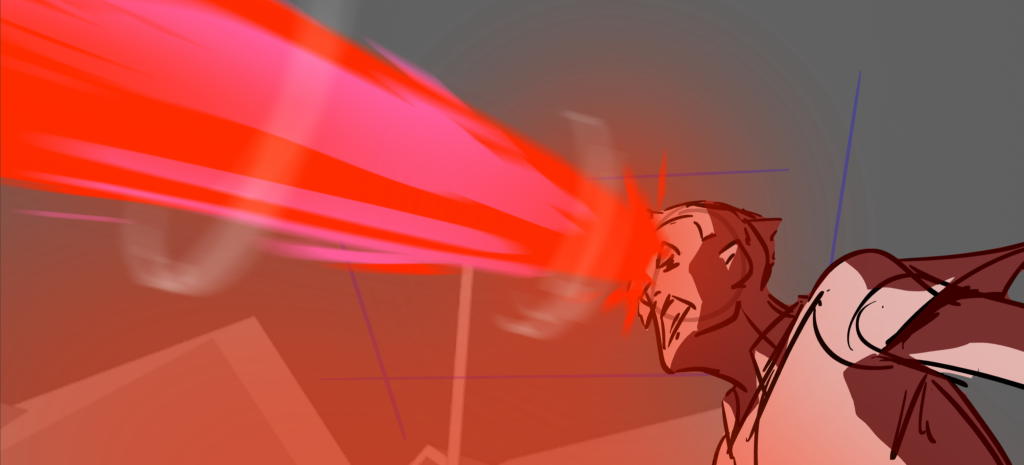
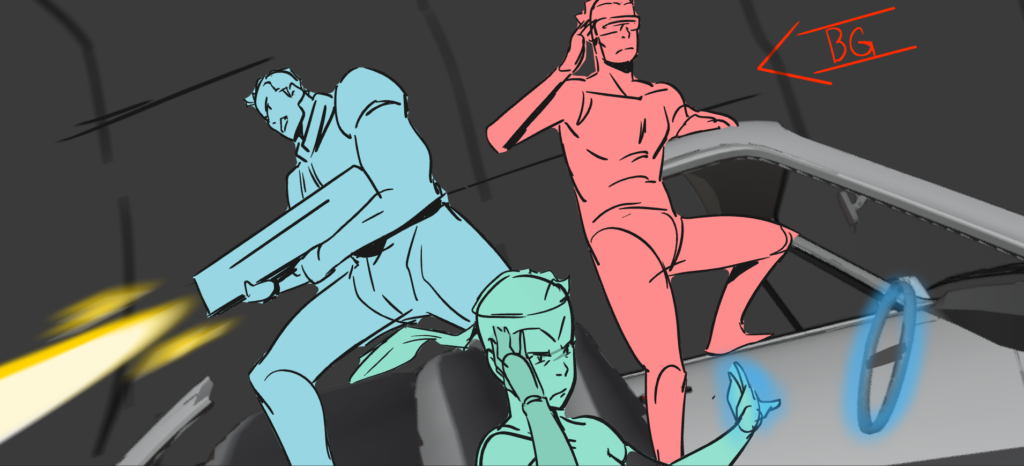
Creating the tone of a scene also requires the Storyboard Artist to focus on the characters themselves. “We initialize the acting,” Jara says. The artist has to figure out who the character is to the story in the sequence that’s being boarded. “I have to frame them in a way that shows that they’re in power, that they’re not in power, or that they’re feeling lonely or scared,” he says.
In Episode 108, Jara worked on a scene in which Jean, Cyclops, and Cable are on their first mission together, sneaking into a villain’s house. Cable is their son, but at this point they haven’t spent time together because Cable was sent into the future when he was a baby. In the quiet darkness, they come across old photos, and Cable sees a family portrait of a mother, father, and child—something he never experienced. To show Cable’s sense of loss, Jara says: “We have Cable look over his shoulder. He sees his parents. Then we cut back to Cable, and he carefully places [the picture back] on the wall. This big, strong character is doing something very gentle—[that’s how we] make sure it’s a moment that’s preserved.”
This is the kind of scene where, in live action, simple facial acting could have done the heavy emotional lifting. But Kuo says facial expressions are difficult in animation, so the artists have to come up with other ways, besides a close-up, to convey a character’s feelings. In Episode 102, an incident causes Storm to lose her mutant powers. Feeling apart from her fellow mutants, she decides to leave. But having her say good-bye to numerous other characters would have been time-consuming. “We needed to show [this] without showing her literally saying goodbye to people, but metaphorically saying goodbye,” says Kuo. To address this challenge, Jean receives a letter from Storm, and Storm’s farewell is in the form of a voiceover. As Storm talks about the meaning of connection and the grief of losing that, an efficient series of panels shows moments such as Jean with her baby and Rogue touching Magneto’s hand. “It came down to trying to find compositions that really reflected [each] line,” Kuo says.
Yonemura also thinks that “if you can establish the environment, you can really showcase a lot of emotion.” One of their favorite examples is in Episode 3. Sinister kidnapped and cloned Jean, creating the Goblin Queen, and when the real Jean returns without her memories, the two women confront one another telepathically and use their shared memories to free themselves from Sinister’s control. “I really, really loved exploring this connection between two women … it was about them both feeling together,” Yonemura says.
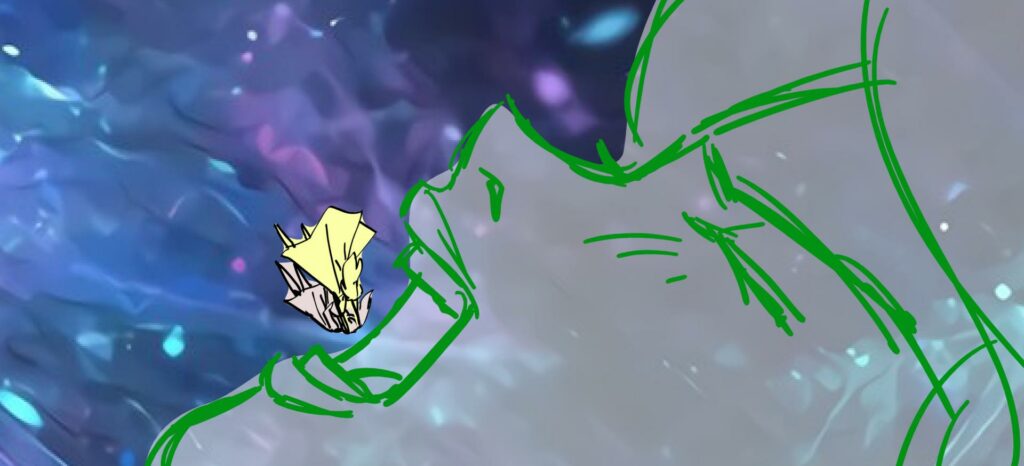
For this scene Yonemura leaned into the idea of motherhood. Surrounded by photos of their shared memories, the Goblin Queen shoves Jean through a memory that is hers alone. The women are swallowed by the Goblin Queen’s ethereal form into the moment in time in her pregnant belly when she gave birth to her son. By showing her floating in this space, Yonemura used a simple but evocative background to establish the emotional essence of the scene, allowing them, in their sketches, to “really focus on the information that we needed.”
“What was nice about this weird universe, the psychic universe, is you can do almost anything,” Yonemura says. In many ways this is like the storyboarding experience itself. “It’s like stepping onto fresh snow,” says Kuo. “There’s so much you can do.”
